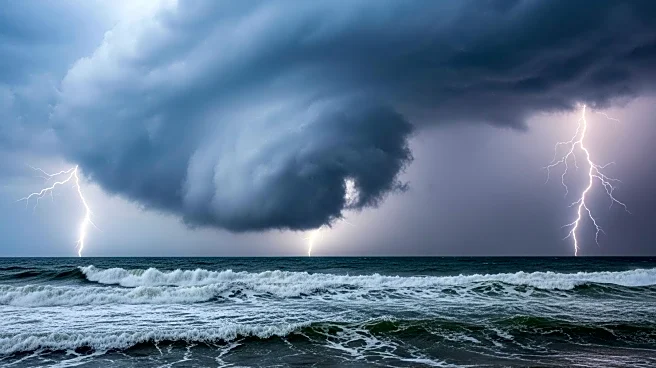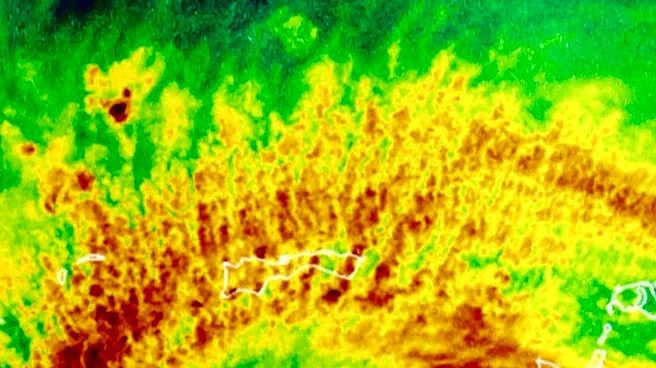What is the story about?
What's Happening?
Super Typhoon Ragasa, the most powerful storm of the year, is currently impacting the northern Philippines with severe winds and heavy rainfall. The storm, known locally as Nando, has intensified rapidly over the Philippine Sea, reaching sustained winds of over 267 kph, equivalent to a Category 5 hurricane. The storm is expected to affect tens of millions of people as it approaches the Batanes and Babuyan Islands. The Philippines has issued its highest tropical cyclone wind signal, prompting the evacuation of over 10,000 people in northern and central Luzon. The storm's outer bands are causing torrential rains and wind gusts exceeding 315 kph, raising the risk of flooding and landslides in northern Luzon. Coastal areas face threats from storm surges and massive waves. The storm is also putting regions in Hong Kong, Taiwan, and southern China on alert, with preparations underway for potential impacts.
Why It's Important?
The intensification of Super Typhoon Ragasa highlights the increasing frequency and severity of storms in the western Pacific, exacerbated by climate change. The storm poses significant risks to densely populated areas, threatening lives, infrastructure, and economic stability. The Philippines, already vulnerable to natural disasters, faces heightened challenges in managing the impacts of such extreme weather events. The situation underscores the urgent need for enhanced disaster preparedness and climate resilience measures in the region. Additionally, the storm's potential impact on Hong Kong, Taiwan, and southern China could disrupt economic activities and necessitate large-scale evacuations, emphasizing the broader regional implications of such powerful storms.
What's Next?
As Ragasa continues its path, authorities in the Philippines and neighboring regions are on high alert, with ongoing evacuations and preparations to mitigate the storm's impact. The storm is expected to pass south of Taiwan and approach Hong Kong by mid-week, with potential disruptions to flights and other services. The situation remains dynamic, with weather agencies closely monitoring the storm's trajectory and issuing updates to ensure public safety. The response to Ragasa will likely involve coordinated efforts across affected regions to address immediate needs and long-term recovery.
AI Generated Content
Do you find this article useful?
















